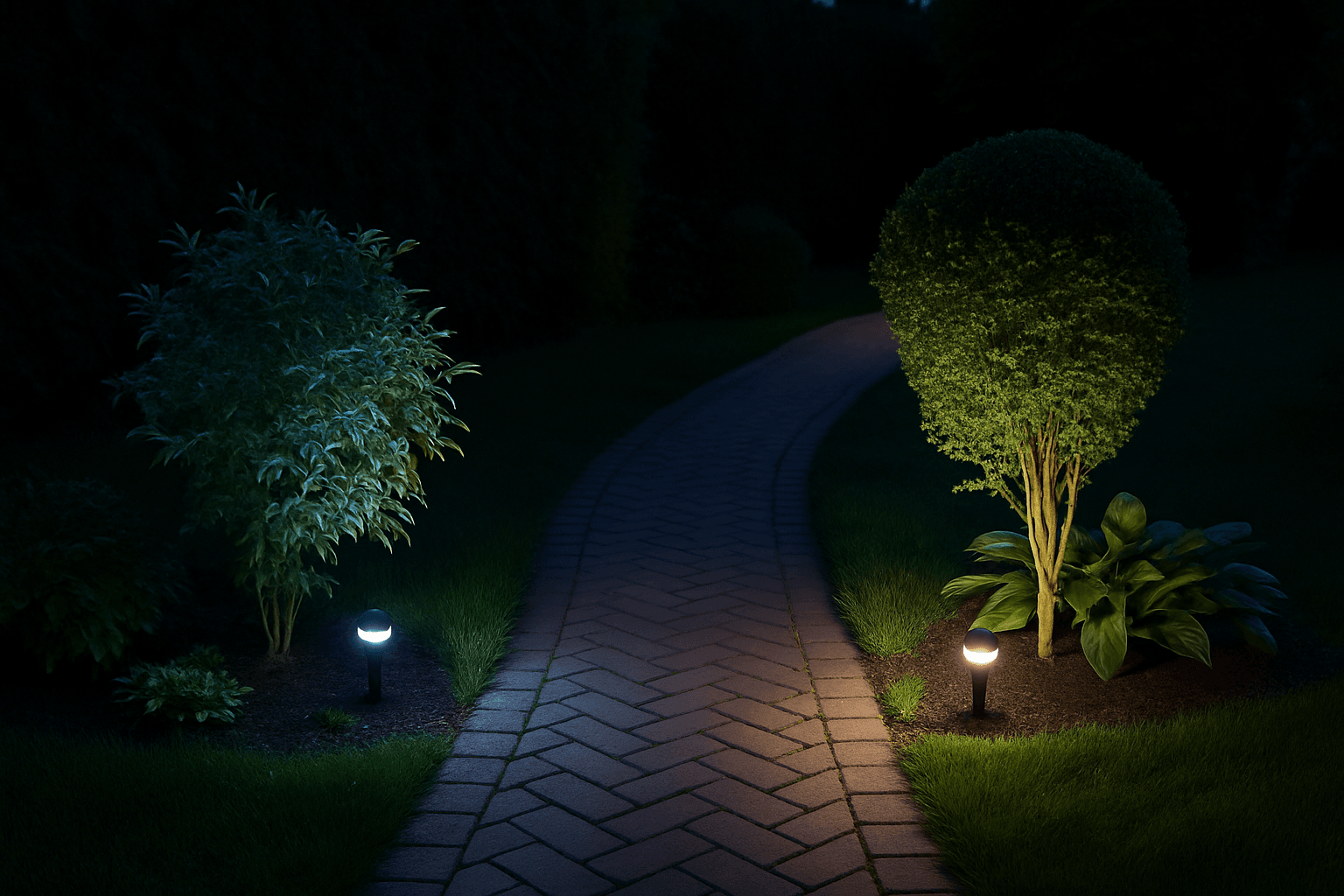Choosing the right white light for your garden can be confusing. Many people mistake cool white for pure white, but they’re not the same—and the difference impacts how your outdoor space looks and feels. Let’s clear it up so your garden glows just right.

Cool white and pure white are not the same. Cool white has a bluish tint and higher color temperature (usually 5000K–6500K), producing crisp, daylight-like illumination. Pure white, often around 4000K–5000K, offers a cleaner, more neutral tone without the blue hue. In garden lighting, cool white adds brightness and contrast, while pure white provides balanced clarity.
Now that you know the basic difference, let’s dive into how each option affects your garden’s appearance, functionality, and even local wildlife.
Is Pure White the Same as Cool White?
No, but they are closely related. Pure white is a neutral white light—free of warm or cool undertones. It typically measures around 4000K–5000K on the Kelvin scale. Cool white, on the other hand, leans toward the blue spectrum and often exceeds 5000K, sometimes reaching up to 6500K.
In outdoor garden lighting, this distinction becomes critical. Cool white LED lights mimic daylight and appear sharper, while pure white lights offer clarity without looking cold or sterile. When setting the tone for your garden path, wall lights, or LED uplighting, pure white feels more balanced for relaxed spaces, while cool white pops with definition.
💡 Example: If you’re highlighting a modern sculpture or feature wall, cool white adds contrast. For seating areas or soft landscaping, pure white feels calmer.
Is Warm White or Cool White Better for a Garden?
It depends on the mood you want and how it interacts with your garden’s environment. Warm white (2700K–3000K) is soft and yellow-toned, giving your garden a cozy, inviting glow—ideal for social areas or patios.
Cool white lights, by contrast, are brighter and can appear harsh in gardens with a lot of greenery. In fact, studies show that cool white LEDs can disrupt nocturnal wildlife like insects, frogs, and even birds, especially if used excessively.
If your goal is eco-conscious lighting, go with warm or pure white garden lights—they’re gentler on local ecosystems and more visually pleasing at night.
🔍 Want wildlife-friendly lighting? Avoid using high-intensity cool white outdoor lights near vegetation.
Is Warm White or Cool White Better for Outdoor Lighting?
Architectural design plays a big role here. For walls, fences, pergolas, and building facades, warm white helps soften the look. It brings out the warmth in wood, brick, and stone textures. Cool white tends to wash these features out.
However, if you’re lighting trees, shrubs, or decorative statues, a cooler temperature (3000K–5000K) may help details stand out better. This is why designers often use a mixed lighting approach—warm for ambiance, cool for clarity.
✅ Tip: Use cool white lights for functionality and safety (like stairs or paths), and warm white for visual appeal and ambiance.
What is the Best White Light for Outdoor Lights?
If you’re asking what’s best for overall usability and aesthetics, the answer is natural white, often referred to as pure white in product listings. At around 3500K–4500K, this color temperature is right in the middle—it’s not too yellow, not too blue.
This is ideal for homeowners who want a neutral, balanced garden appearance. Whether it’s for illuminating driveways, flower beds, or decorative garden lights, pure white light gives you enough visibility without altering the natural colors of your plants and landscape.
🌿 Best color landscape lights are in the 3500K–4500K range for blending function with beauty.
Is Cool White or Warm White Better for the Eyes?
Here’s a detail often overlooked: cool white LEDs can cause more eye strain, especially when placed near seating areas or used as floodlights. The bluish tint can feel clinical or too intense after prolonged exposure.
Warm white and pure white, however, are easier on the eyes and create a more relaxed visual environment. This is something to consider if you spend a lot of time outdoors in the evening or host gatherings in the garden.
🧠 Think about warm white vs cool white not just in terms of looks—but in terms of comfort too.
What’s the Difference Between Warm White, Pure White, and Cool White Christmas Lights?
Gardeners and decorators often ask this during the festive season, and it’s a great comparison:
- Warm white Christmas lights create a soft, amber glow—perfect for cozy, classic looks.
- Pure white is bright and crisp without looking too icy. It works well for modern garden setups or pathways.
- Cool white Christmas lights are the brightest and most vivid. They reflect strongly off snow and metallic décor, making them ideal for outdoor displays and winter themes.
So, while pure white and cool white Christmas lights might appear similar, they cater to different moods and visual temperatures. The same principle applies to garden lighting year-round.
🪴 Final Thoughts: Which One Should You Choose?
Still unsure? Here’s a quick guide:
- For modern, clean landscaping → Choose pure white.
- For highlighting garden details or security lighting → Choose cool white.
- For relaxed, cozy evening gatherings → Stick with warm white.
- To protect wildlife and your eyes → Avoid very high Kelvin cool white options (>6500K).
Picking the right white light isn’t just a matter of style—it’s about creating the right mood, ensuring visibility, and protecting your garden’s natural rhythm. Let me know what look you’re going for, and I’ll help you choose the perfect glow!
